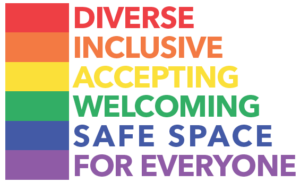Seasonal Affective Disorder in the Sunshine? You Bet!
By Katelyn Millinor, LPC | Behavioral Health Quality Manager
Seasonal Affective Disorder (SAD) is a type of depression that happens or changes with the season, with symptoms lasting 4 to 5 months every year. And while many people associate SAD with dark, cold, winter months, people living in sunny Central Arizona can and do suffer from SAD just like everyone else, but ours usually happens when temperatures heat up.
Get ready! Things are about to heat up—but probably not your mood.
Desert dwellers, like residents in the Valley of the Sun, tend to thrive in the winter months engaging in time outdoors. However, when summer months come, the extreme heat and sun can take a toll on our bodies and our mood. Millions of Americans suffer from SAD but may not recognize the have the condition.
Seasonal Affective Disorder Symptoms
Symptoms may differ based on season and for summer Seasonal Affective Disorder, symptoms may include:
- trouble sleeping
- poor appetite
- restlessness
- irritability
- anxiety
To read more about symptoms, visit the National Institutes of Mental Health on Seasonal Affective Disorder. Additionally, if you already have depression or anxiety, this seasonal change could worsen your symptoms.
Since the timing of SAD is predictable with the seasons, you may be able to get ahead of by doing preventative care to help with symptoms. Ways to reduce or help symptoms can include talking with your primary care provider, a counselor, a nutritionist, or a psychiatric provider. One of the best things you and your counselor or other provider can help you with is developing coping skills and understanding the signs and symptoms that may be helpful to jump start your seasonal self-care routine.
For most people, staying cool, regular physical activity, adequate sleep, and socialization can reduce symptoms.
Talk to your NOAH healthcare provider if you begin to experience SAD or have questions about this or other health, wellness, or mental health issues you may be facing.
How to Set and Evaluate New Goals
By Nicole Vaudrin O’Reilly, MS, RD |Nutrition Educator
A lot of us know what we could do to be healthier. The hard part is putting these ideas into practice. One way to get motivate around new goals for a healthier life – without becoming overwhelmed or discouraged – is to treat it like a self-experiment. This turns it into a process, rather than the idea of flipping a switch. Best of all, it removes the damaging self-talk that holds many of us back, for example ‘I ate pizza and cake today. I’m no good at dieting. I might as well give up,’ because it isn’t an all-or-nothing process.
This process looks a lot like doing experiments in science class. Here’s how it works:
- Ask yourself some questions.
- What area of my health do I want to improve?
- Do I want to eat healthier?
- Would exercising more be good for me?
- Should I try to get more sleep and reduce my stress?
- Research: Take a week or more to study yourself and your habits.
- Keep a notebook, voice memos, or something similar nearby to write or record what you do during your week.
- Write or record what you eat, what exercise you do, what causes you stress, what time you go to sleep and wake up, and whatever else you are trying to improve.
- Then record WHY you made these choices (if you know). For example, if you want to improve your diet, you may want to track:
- What foods you eat, how much, and what times of day?
- How you feel throughout the day. Were you feeling– starving, rushed, stressed, bored, anxious, depressed, restless, etc.?
- Why did you choose those foods?
- Look for patterns, like eating too much because you skipped a meal, or getting fast food on busy days at work/school, or running late makes you stressed, etc.
- Create a plan to reach your new goals: With all that great information you recorded above, think about what would help you make better choices. Choose one or more to try out, for example:
- If boredom makes you overeat, distract yourself by taking the dog for a walk, stretching, reading, putting away the laundry, or something else not related to food.
- Drink a glass of water when you want to snack and take that time to decide whether you’re hungry or not.
- If the food options around are a problem, try cut-up vegetables, fruit, low-fat yogurt, nuts, whole grain crackers, lightly buttered popcorn, etc.
- If you need more sleep, set a daily timer to head to bed at an earlier time.
- Experiment: Try one of your new plans for at least a week and see what happens.
- Some plans might be ready to go, but others may need to be more specific. Like changing “I will go to sleep earlier” to “I’ll set an alarm to go to bed by 10 p.m.”
- Collect and Analyze Information: Keep some notes like in #2 above.
- How often were you able to meet your goal (every day, two times a week, never)?
- What helped you be successful? What got in your way?
- For example, if your goal was to drink a glass of water before snacking, “This seemed to work during the day at work, but I still ate junk food at home while watching TV.”
- Go back to your plan and re-test.
- If you met your goal, congratulations! Keep it going until it becomes a habit.
- Do regular check-ins every week in the beginning and then monthly as you build new habits.
- If you didn’t meet your goal, change your plan and try again.
- You continue to drink water during the day when at work, and then add a new goal to only buy healthier snacks for TV time.
- If you met your goal, congratulations! Keep it going until it becomes a habit.
Whatever your new goals are, we know you can make progress! NOAH’s comprehensive team is here to support and guide you through this process. If you want to reduce stress, our behavioral health team is here for you, and if you want to make healthier choices with food and exercise, our nutrition services team can help you and review your goals regularly. By doing self-experiments, you learn more about yourself and how to work with your preferences and current habits to make healthy changes.
Tips for Kids During The Summer Months by Katelyn Millinor, LPC
“With summer temperatures usually exceeding 100 degrees, it’s safer to turn to indoor activities and keep kids out of the sun.”
Most families around the country are enjoying time outside engaging in fun summer activities. In the Arizona valley that seems almost impossible. Keeping our kids busy during the summer months can be challenging. Here are some low or no cost options for summer fun.
Indoor activities
- DIY arts and crafts.
- Board games/ card games.
- Reading (consider audiobooks).
- Puzzles.
- Scavenger hunts.
- YouTube videos to learn a new skill (consider cooking, yoga, painting).
- Apps (find an age-appropriate app that encourages learning).
- Remember, it only takes about 10 minutes of play to connect with your child. Consider making time to play with your child daily. Try to choose activities that match your child’s development and age.
- Around the community.
- Children’s Museum of Phoenix.
- Local Public Libraries (most offer story time for younger kids as well as some classes/events for older children such as computer coding and college prep).
- Arizona Science Center.
- Local parks or pools.
- Local sports (Minor League Baseball plays at 7:00PM throughout the valley from mid-June until early-September and it’s free to attend).
- McCormick-Stillman Railroad Park.
- Adobe Mountain Desert Railroad Park.
- Local art/craft classes (City of Tempe hosts Free Art Friday for preschoolers and their parents).
- Karate, gymnastics, or other types of classes available in the community.
Arizona has extreme temperatures during the summer. Here are some tips protect your child and family.
Sun and heat tips
- Plan errands and recreational activities for the early morning and evening. Avoid being outside from 10 AM to 4 PM when the sun is the hottest. Consider starting each day with a morning walk or taking an evening bike ride.
- Teach your children to wear shoes outside. The concrete or pavement can be hot enough to cause second-degree burns.
- Check the temperature of buckles and car seats as they can reach the temperature of a hot skillet. Park in covered parking or under shade whenever possible or use a wind shield sunshade.
- Keep water with you. Pack extra bottles in the car in case of an emergency.
- Wear sunscreen. Make sunscreen part of your morning routine. Lather up your kids before dressing them to ensure they’re protected, even if you’re not around water.
Summer doesn’t have to be boring. Feel free to ask any of our NOAH providers for suggestions on summer activities in your community and how to stay safe in the heat.
Asthma Awareness in Children by Dr. Patricia Avila, Pediatrician
“Asthma in children is one of the most common long term (chronic) diseases. It is estimated to affect 1 in every 10 children in the US. If your child has Asthma one of the most important things you must do is to learn as much as you can about Asthma. Being educated about your child’s Asthma will help you work together with your child’s doctor to control their Asthma and have the absolute best outcome.”
Dr. Patty Avila, Pediatrician
What is Asthma?
- It is a disease of the lungs that causes the airways or tubes that bring air into the lungs to become swollen and inflamed. The muscles around the airways become tight and it makes it hard to breathe. This leads to episodes of coughing, wheezing, feeling breathless, chest pain/chest tightness, and feeling more tired than usual.
- It is more common in children with a parent or sibling or close relative with Asthma, Allergies, and/or Eczema. Children with Asthma often develop Allergies or Eczema as well. These are sometimes present before they develop Asthma.
- There is no cure for Asthma. There are medications and things you as a parent/caregiver can do to help control it. Know what the signs/symptoms of Asthma are, how to avoid triggers, and follow your doctor’s treatment plan. This is especially important to prevent and decrease the damage to your child’s lungs. It will also help avoid your child needing emergency medical treatment.
What causes an Asthma Attack?
- An Asthma attack happens when your child is exposed to “triggers” things that cause your child’s Asthma to get worse.
- An Asthma attack also happens when a child does not take their medications as prescribed.
Common triggers include:
- Allergens – including outdoor allergens like pollen, animal dander, dust mites, mold, and cockroaches.
- Infections – including the common cold, the flu, sinus infections, and cases of pneumonia.
- Irritants – including cigarette smoke or other smoke, pollution, strong odors like perfumes or scented candles, and cleaning products.
- Changes in weather – cold and dry, very humid, or extremely hot weather.
- Exercise.
- Stress and strong emotions.
How can you help control your child’s Asthma and how is it treated? Avoid triggers. It may not be possible to completely avoid all possible triggers, but there are some changes you can make that will help.
- Allergens. Have your child take their allergy medications during allergy season. Keep windows and doors shut during allergy season. Avoid outdoor activities when pollen counts are high.
- Dust mites. Use mattresses and pillow covers. Vacuum and dust regularly. Wash bedding once a week. Limit and wash stuffed animals.
- Furry pets. Keep pets out of your child’s bedroom. Wash pets more often.
- Use HEPA filters.
- Fix any water leaks that could lead to mold.
- Infections. Make sure your child and family receive their yearly Flu vaccine. Having Asthma increases your child’s risk for severe Flu illness that can trigger an Asthma attack.
- Use good hand hygiene.
- Irritants. Do NOT allow anyone to smoke in your home or car. Avoid public places where smoking is allowed. Avoid the use of perfumes, scented candles, incense, paints, and cleaning supplies that can irritate your child’s lungs. Check your local forecast for air quality and keep your child indoors when the pollution is bad.
- Weather. Avoid outdoor activities in extreme weather conditions.
- Exercise. If your child’s Asthma is triggered by exercise have your child take his/her Albuterol 15-30 minutes prior to activity to prevent these symptoms. Encourage your child to exercise and participate in sports. Know what medications help control his/her Asthma so that they can continue to be active.
- Medications. Includes inhaled medications in the form of MDIs also known as inhalers or “pumps” and nebulizers that are given by a machine. Rescue or quick relief medications like Albuterol help during an Asthma attack. They help open the airways or tubes that bring air to the lungs. Long-term controller medications like inhaled corticosteroids help improve the inflammation of the lungs. When these medications are used daily your child is less likely to have an Asthma attack.
Develop an Asthma Action Plan.
This plan is made with the help of your child’s doctor. It will help you and your child know what medications to use and when. It will also help you and your child know what to do in the case of an emergency. Share this plan with the school as well. It is important because your child spends a good amount of time there and the school will know exactly how to help your child.
By becoming knowledgeable about your child’s Asthma, avoiding triggers, and following a good Asthma Action Plan you are taking important steps in keeping your child healthy. Have your child see his/her doctor at least 2 times per year to ensure their Asthma is under control. Do not forget to make sure your child and family receive a yearly Flu vaccine. Your child should be able to enjoy everyday activities and participate in sports without any problems breathing if their Asthma is under control.
Safe Practice When Entering a Home During the Coronavirus Pandemic
Your home:
- Home entry doors should have hand sanitizer available for everyone who enters the home
- If you have older family members living at your home – discuss having them use a separate entry if possible and isolate if needed from high volume areas
- If family members were with larger groups – change clothes near the entryway and clean area
- Discuss the CDC home base actions recommendations
Visiting a home:
- Call ahead to make sure they are expecting visitors
- Let them know if you are not ill
- Make sure they are not ill or been around someone possibly ill
- Ask about having hand sanitizer or any other precautions at their home’s entry
- Ask if it would be better to delay your visit
From the CDC:
Practice good personal health habits and plan for home-based actions
Practice everyday preventive actions now. Remind everyone in your household of the importance of practicing everyday preventive actions that can help prevent the spread of respiratory illnesses:
- Avoid close contact with people who are sick.
- Stay home when you are sick, except to get medical care.
- Cover your coughs and sneezes with a tissue.
- Clean frequently touched surfaces and objects daily (e.g., tables, countertops, light switches, doorknobs, and cabinet handles) using a regular household detergent and water.
- If surfaces are dirty, they should be cleaned using a detergent and water prior to disinfection. For disinfection, a list of products with Environmental Protection Agency (EPA)-approved emerging viral pathogens claims, maintained by the American Chemistry Council Center for Biocide Chemistries (CBC), is available at Novel Coronavirus (COVID-19) Fighting Products. Always follow the manufacturer’s instructions for all cleaning and disinfection products.
- Wash your hands often with soap and water for at least 20 seconds, especially after going to the bathroom; before eating; and after blowing your nose, coughing, or sneezing. If soap and water are not readily available, use a hand sanitizer that contains at least 60% alcohol. Always wash your hands with soap and water if your hands are visibly dirty.
https://www.cdc.gov/coronavirus/2019-ncov/prepare/get-your-household-ready-for-COVID-19.html
A great source of help
In 2008, my family and I relocated to the United States. Without health insurance and access to healthcare, we didn’t know where to turn. We were referred to NOAH-Neighborhood Outreach Access to Health, an organization that focuses on helping all people, even those that are vulnerable. They treated our health care needs, giving my family hope.
Read more


